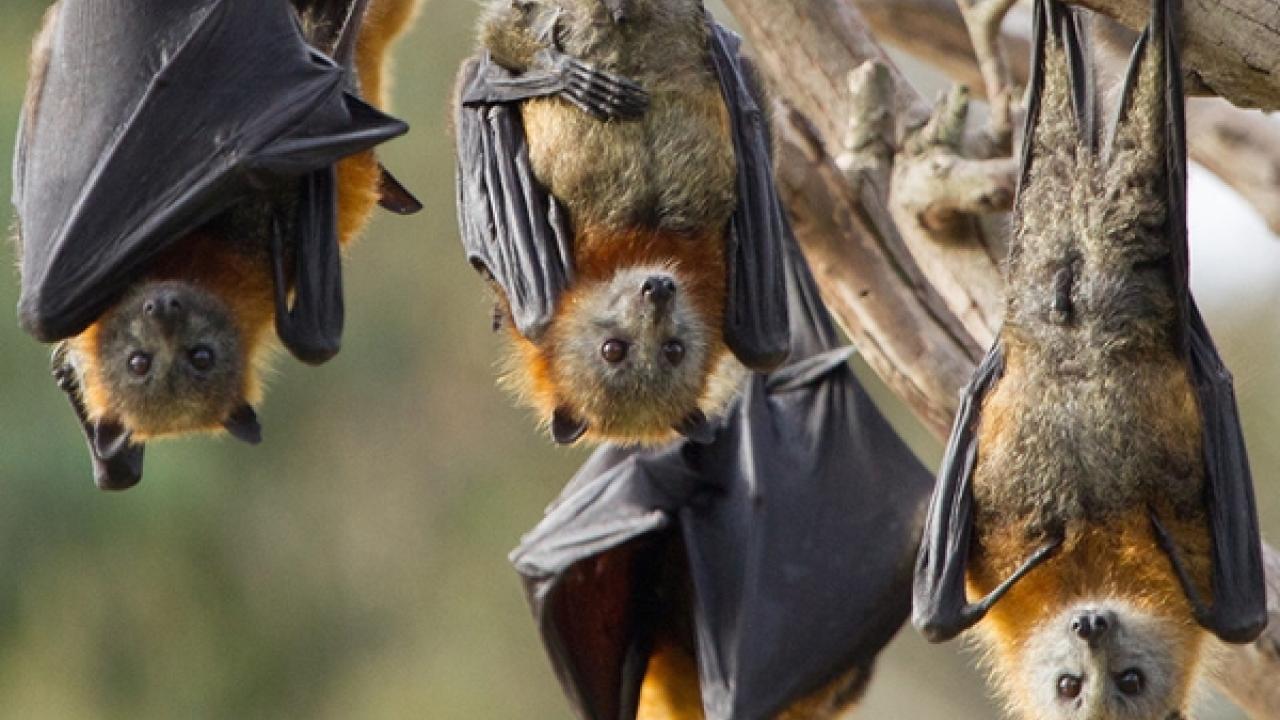
Bats are the Major Reservoir of Coronaviruses Worldwide
Results of a five-year study in 20 countries on three continents have found that bats harbor a large diversity of coronaviruses (CoV), the family of viruses that cause Severe Acute Respiratory Syndrome Coronavirus (SARS) and Middle East Respiratory Syndrome Coronavirus (MERS). Findings from the study—led by scientists in the USAID-funded PREDICT project at the University of California, Davis’ One Health Institute in the School of Veterinary Medicine and the Center for Infection and Immunity (CII) at Columbia University’s Mailman School of Public Health—are published in the journal Virus Evolution. PREDICT is a globally coordinated effort to detect and discover viruses of pandemic potential and reduce risk for future epidemics.
With the cooperation of local governments, researchers sampled and tested 19,192 bats, rodents, non-human primates, and humans in areas where the risk of animal-to-human transmission is greatest, including sites of deforestation, ecotourism, and animal sanctuaries. The researchers identified 100 different CoVs and found that more than 98 percent of the animals harboring these viruses were bats, representing 282 bat species from 12 taxonomic families. Extrapolating to all 1,200 bat species, they estimate a total of 3,204 CoV are carried by bats worldwide, most of which have yet to be detected and described. They also found that CoV diversity correlated with bat diversity with high numbers of CoVs concentrated in areas where there are the most bat species, suggesting CoVs coevolved with or adapted to preferred families of bats.
“This study fills in a huge gap in what we know about the diversity of coronaviruses in animal hosts,” says first author Simon Anthony, assistant professor of Epidemiology in CII. “Charting the geographic and genetic diversity of coronaviruses in animals is a critical first step towards understanding and anticipating which specific viruses could pose a threat to human health.”
The First Step to Identifying Suspect Viruses
The researchers used consensus PCR, a cost-effective technique that targets a small section of the viral genome—sufficient to locate the position of each virus in the family tree of all CoVs. To go a step further, researchers are using more powerful genome-wide sequencing to take a detailed look at those viruses that resemble known threats to humans. In a study published in April, they reported that a MERS CoV-like virus did not have the genetic prerequisites to jump to humans—a sign that MERS-CoV had evolved to become more capable of transmission. A similar effort is now underway to sequence viruses similar to SARS-CoV.
Regional Variation in Risk of Virus "Jumping" Outside its Genus
Researchers report preliminary evidence that CoVs in bats in Latin America were less likely than CoVs in Africa and Asia to “jump” outside their genus or family, potentially a sign of relatively lower risk of bat-to-human transmission on that continent. However, the authors caution that these regional differences may reflect variation in the ecology of bats in the various areas, and more work needs to be done to understand this.
Bats Play an Important Role in Ecosystem
The researchers say their findings should not be interpreted as a call to cull bats. Bats play an important role in the ecosystem, and most of the coronaviruses they carry are harmless to humans. Additionally, culling may have unintended consequences: destabilizing host ecology can actually increase risk for disease transmission, as seen in studies of Marburg and rabies viruses.
“Our goal is to shed light on the ecology of virus-host interactions to better understand and address the conditions that give rise to outbreaks like SARS and MERS,” says senior author Tracey Goldstein, associate professor at the One Health Institute at the University of California, Davis.
The study was supported by USAID through the Emerging Pandemic Threats PREDICT project. Additional co-authors include W. Ian Lipkin, Sarah Kramer, Xiaoyu Che, Heather Wells, Allison L. Hicks, and Stephen S. Morse at the Mailman School of Public Health; Christine K. Johnson, Denise J. Grieg, and Jonna A. K. Mazet (PI and project director) at the University of California Davis; Damien O. Joly and Nathan D. Wolfe at Metabiota, Inc.; Peter Daszak and William Karesh at EcoHealth Alliance; and the PREDICT Consortium. The authors declare no conflicts.
About PREDICT
PREDICT is enabling global surveillance for viruses that may spillover from animal hosts to people by building capacities to detect and discover viruses of pandemic potential. The project is part of USAID’s Emerging Pandemic Threats program and is led by the UC Davis One Health Institute. The core partners are USAID, EcoHealth Alliance, Metabiota, Wildlife Conservation Society, and Smithsonian Institution. Scientists work in 30 countries in Africa and Asia testing for five viral families—coronaviruses (le.g. SARS/MERS), filoviruses (e.g. Ebola), paramyxoviruses (e.g. Nipah / Hendra), influenza viruses (e.g. H1N1, H5N1, H7N9) and flaviviruses (e.g. Zika)—in wildlife, livestock, and humans, to understand the risk of spillover. As part of this effort, lab scientists around the world are trained to perform viral testing—a vital skill in case an outbreak should emerge. Field researchers are trained to safely handle and sample animals by capture and release.
